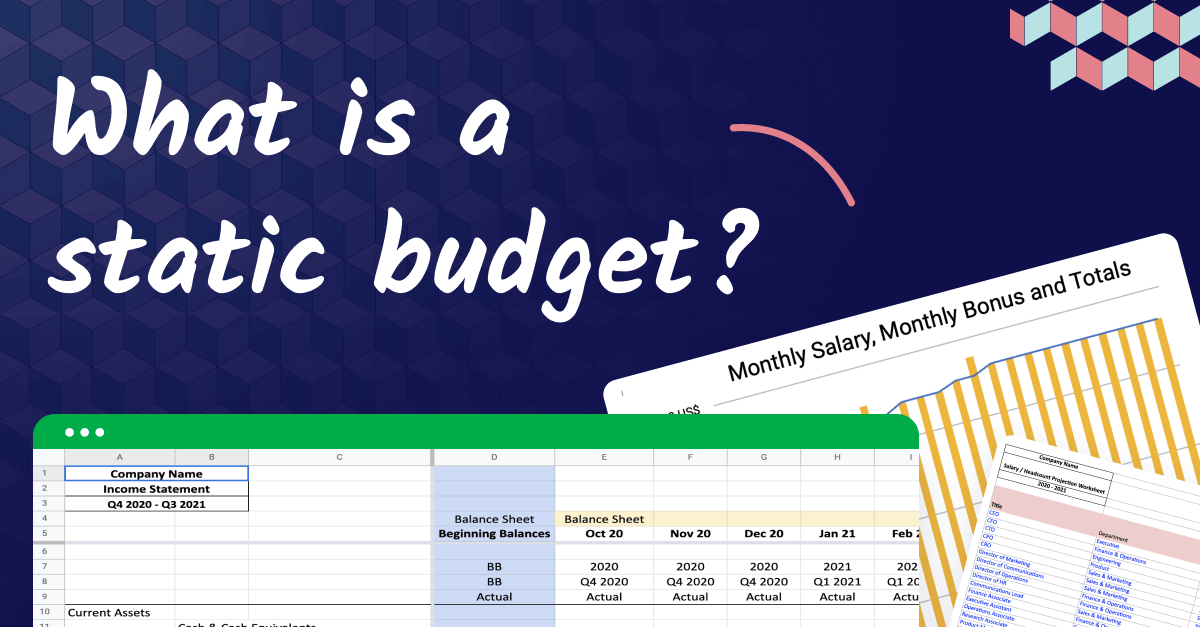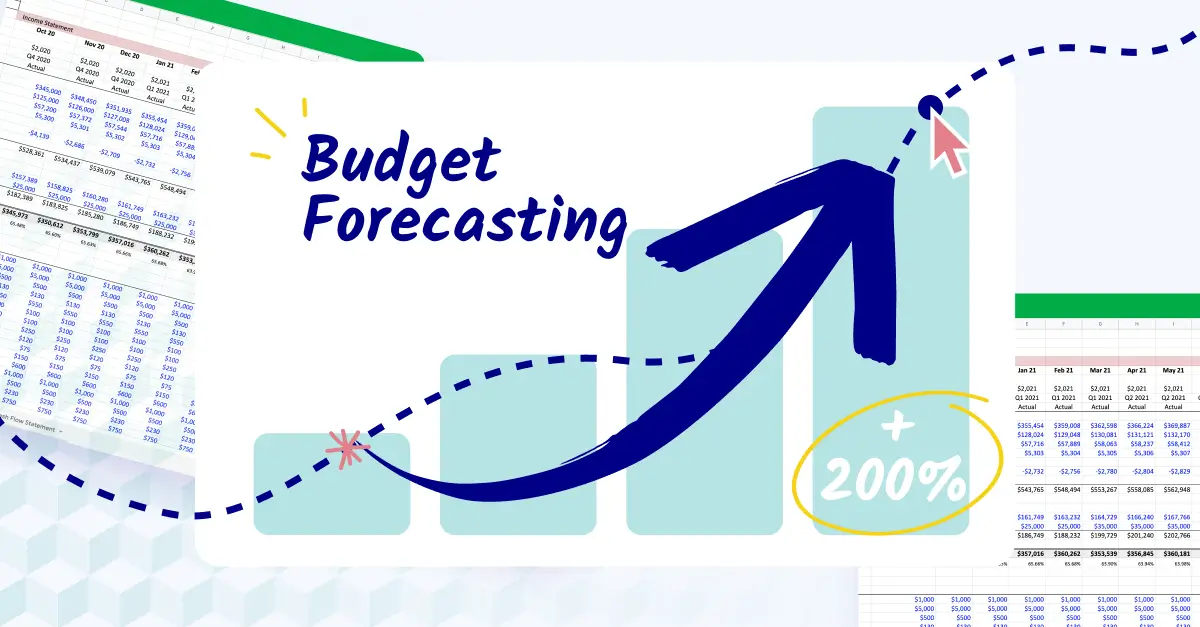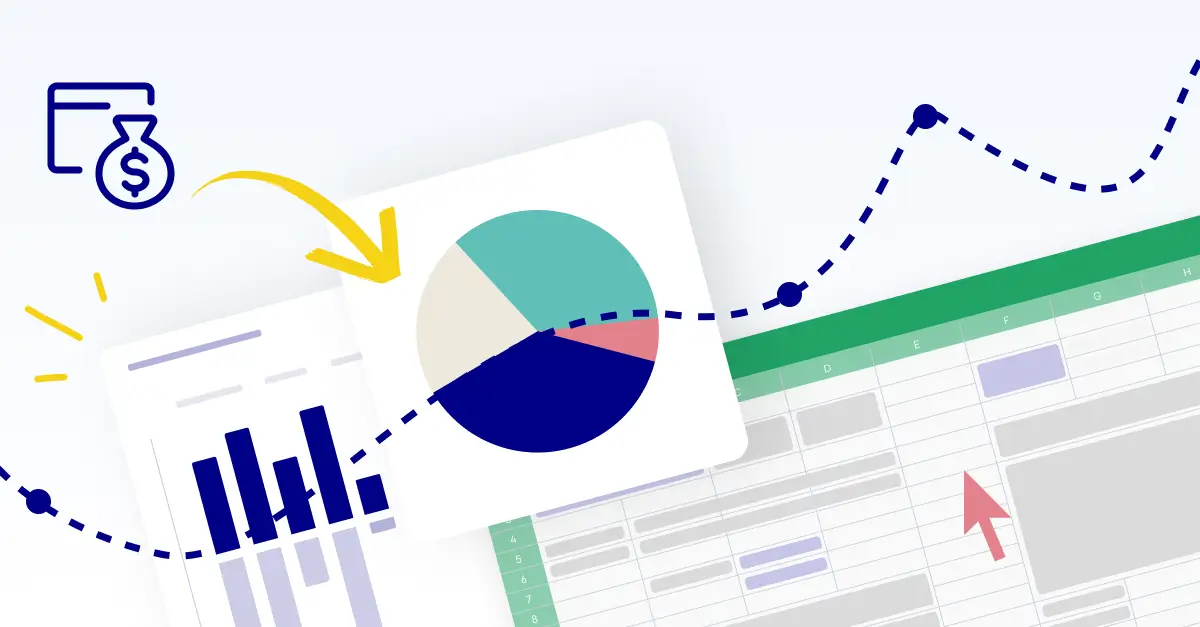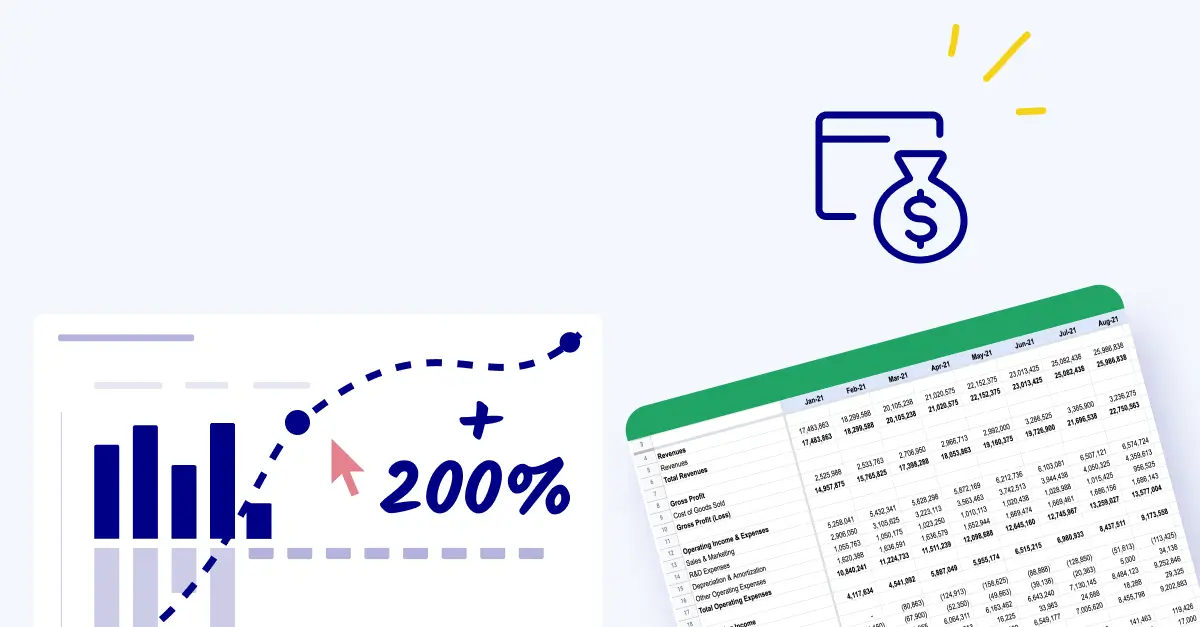Key takeaways
- A static budget provides management with a detailed understanding of the company’s financial position, helping them make informed decisions about its future direction.
- Static planning, in addition to being a financial planning tool, also helps in the company's strategic planning.
- Static planning allows the company to focus on the long term by setting a clear strategy and aligning the resources accordingly, which also improves the efficiency and effectiveness of the organization.
What is a static budget?
A static budget is a financial plan set before a specific period, such as a month or a year, using predicted amounts based on historical data and assumptions about the future.
The static budget remains unchanged regardless of deviations in revenue and expenses that may occur during the period.
External factors like the company's overall success don't affect the static budget.
Even if actual sales volume significantly deviates from the static budget, the amounts listed in the budget don't get adjusted going forward.
So companies use a static budget as the basis from which actual costs and results are compared.
Companies use the previous year’s fixed budget as a starting point and then consider any variances to fine-tune the budget while keeping the larger focus on meeting long-term goals.
The budget also includes the assumed cost of achieving a desired outcome, which is relayed as a line item in the budget.
A static budget can be considered an "ideal" scenario, or a baseline for "optimal financial performance." But it can also serve as a worst-acceptable-scenario baseline.
What is the objective of a static budget?
The primary objective of a static budget is to provide a financial plan that guides the operations of a business and to help management measure performance by comparing actuals to the plan.
In other words, the budget is a benchmark for the company’s performance and can help management identify the variances between the plan and the actuals.
So comparing actuals to the budget lets the finance team evaluate the performance of the business and take corrective actions if necessary.
Static budget formula
The formula for a static budget depends on the type of budget and the specific financial metrics used.
A static budget can be created for various financial statements like the income statement, balance sheet, and statement of cash flow.
For example, for an income statement, the static budget formula would be:
Static Budgeted Income Statement = Revenue - Expenses = Profit or Loss
where
Revenue = budgeted sales * budgeted price
Expenses = (budgeted cost of goods sold + budgeted operating expenses)
In the case of the cash flow statement, the formula would be:
Static Budgeted Cash Flow = (Budgeted Cash Inflow) - (Budgeted Cash Outflow)
where
Budgeted Cash Inflow = budgeted revenue + budgeted changes in working capital
Budgeted Cash Outflow = budgeted capital expenditure + budgeted dividends + budgeted interest payments
It's important to note that these formulas would be tailored to the specific organization, the industry, and the reporting standards they chose to follow.
Static budget example
Let’s assume a retail store wants to create a budget for the next quarter.
The store management team gathers historical data and forecasts future financial results. Based on this information, they set a budget for the quarter.
The budget includes the following:
- Revenue: The store expects to sell $500,000 worth of merchandise at an average price of $50 per item.
- Cost of goods sold: The store expects to pay $200,000 for the merchandise.
- Operating expenses: The store expects to spend $100,000 on rent, salaries, and other operating expenses.
Using these figures, the store creates the following static budget for the quarter:
Static Budgeted Income Statement
Static Budgeted Income Statement = Revenue - Expenses = Profit or Loss
= $500,000 -$300,000
Profit or loss = $200,000
Based on the income statement, the retail store is expected to make a gross profit of $200,000.
The store will then use this budget as a benchmark for performance. Once the quarter progresses, they will compare actuals to the budget to see how they perform.
If the actuals are lower than the budgeted figures, the management team can investigate the reasons for the variances and take appropriate measures.

The importance of static budgets and static planning
Static budgets have plenty of use cases. Here are some of the most common ones:
1. Act as a performance benchmark
By comparing actuals to the budget, financial leaders can evaluate the performance of the business and take corrective actions if necessary.
This helps ensure that the business is on track to meet its financial goals and objectives.
2. Determine financial targets
Static budget helps management set financial targets for the business.
It helps identify the financial goals of the business and allocate resources accordingly.
3. Allocate resources
Static budget and static planning often guide allocating resources such as capital, labor, and materials.
This way, it can be ensured that resources are being used efficiently.
4. Control expenses
Static budget serves as a tool for controlling expenses.
By setting a budget and comparing actual results to the plan, unnecessary or excessive expenses can be easily identified and avoided.
5. Monitor cash flow
Static budget helps to monitor cash flow by forecasting cash inflow and outflow.
Any potential cash flow problems will be identified sooner than later so that appropriate measures can be taken.
6. Variance analysis
A static budget helps identify variances and the reasons for them to occur.
This helps in identifying the areas which need massive improvements.
What is static budget variance?
Static budget variance refers to the difference between the budgeted or expected results and the actual ones for a specific period.
It's calculated by comparing the budgeted amounts to the actual amounts for a given period, such as a month or a year.
In other words, it's the deviation between the planned/forecasted and actual figures.
Variance can be either positive or negative.
A negative variance indicates that actual results are worse than budgeted results.
A positive variance indicates that actual results are better than budgeted results.
Pretty simple, right?
Static budget variance formula
The formula to calculate static budget variance is as follows:
Static Budget Variance = Actual Amount – Budgeted Amount
For example, if a business had a budgeted revenue of $100,000 for a certain period, and the actual revenue was $110,000, the variance would be calculated as:
Static Budget Variance = $110,000 - $100,000 = $10,000 (positive variance)
If the actual revenue was $90,000, the variance would be calculated as:
Static Budget Variance = $90,000 - $100,000 = -$10,000 (negative variance)
Now that we have covered the basics, it’s time to cover the common question regarding the static budget.
What is a static budget vs. a flexible budget?
Static and flexible budgets are financial planning tools businesses use to guide their operations and measure performance.
Here are the key differences.
Static budget
A static budget is a benchmark for evaluating sales performance and cost center managers' ability to control their expenditures.
Unlike the flexible budget, they are created based on desired results and outcomes of the company rather than inflating the previous budget by a set percentage.
A static budget based on planning inputs can help serve as an "ideal" (or "not ideal") baseline against which to measure business performance and the company's overall financial health.
Flexible budget
A flexible budget changes based on actual results.
It is more responsive to changes in the business environment but can be more complex to create and manage.
Furthermore, it can be adjusted as needed to reflect changes in revenue or expenses.
When to use static budgets vs. flexible budgets
As convenient as it sounds, a static budget is not a good choice for many companies.
Of course, there are exceptions. Those are usually government agencies, NGOs, and (in some rare cases) monopolies.
A static budget is a great choice for companies that run in stable environments with little fluctuation in revenues and expenses.
But flexible budgets are much better for most companies.

Static budget pros and cons
Static budget pros
- Provide a clear and specific financial plan for a specific period of time.
- Helps businesses to identify and manage costs effectively.
- Facilitates better decision-making by providing a clear understanding of how much money is available to spend.
- Allows businesses to identify and address any budget variances early on.
- Provides a clear understanding of the company's financial position.
- Promotes accountability by holding employees responsible for achieving budgeted results.
Static budget cons
- Does not take into account unexpected changes in revenue or expenses
- May not be suitable for businesses with fluctuating sales or expenses
- Can be time-consuming and difficult to create
- May not be suitable for businesses that are rapidly growing or shrinking
- May not take into account external factors that can impact the business's financial situation, such as changes in the economy, industry trends, and so on.
As the name suggests, there isn’t much flexibility to a static budget.
So you can’t adapt to unexpected situations like supply chain issues.
That’s why most companies use a mix of both static and flexible budgets to help them keep track of their performance by comparing them both to their actual spending.
Side note:
Apart from mixing both static and flexible budgets, some companies tend to favor zero-based budgeting to be more in control of their financials.
Zero-based budgeting is a budgeting method in which all expenses must be justified for each new period, rather than simply incrementing the previous budget.
The budget in zero-based budgeting is created from scratch each period, starting with a "zero base."
This means each department and activity must be analyzed and justified individually, regardless of the past budget or the previous spending.
This approach aims to ensure that all expenses are essential and justified, avoiding the carry-over of unnecessary expenses.
How to build a static budget
Let's get into the six steps to build a working static budget.
1. Estimate revenue
Revenue is the total amount of money a business earns from sales.
To estimate revenue, you'll need to consider past sales performance and the expected sales performance you have set for the time period that you’re focusing on building the budget.
Look at your previous MRR and ARR to build the best estimate.
This is, of course, easier for companies with highly predictable sales volume. It's okay to use revenue as a basis for a couple different scenarios and static budgets.
2. Estimate fixed costs
Fixed costs are expenses that remain constant regardless of the level of production or sales.
Examples of fixed costs include rent, salaries, and insurance. To estimate fixed costs, you'll need to gather historical data and forecast future expenses.
3. Estimate variable costs
Variable costs are expenses that change in proportion to the level of production or sales.
Some examples include materials and direct labor (which will increase the more you produce).
To estimate variable costs, calculate the average percentage of those costs relative to historical revenue and apply that ratio to your projected period.
4. Build your forecast
You can use budget forecasting techniques to estimate the variable costs for a static budget.
One way to do this is by calculating the average percentage of those costs relative to historical revenue.
This can be done by taking the total variable costs for a specific period and dividing it by the total revenue for that period.
Then apply that ratio to your projected period to estimate the variable costs for your budget forecast.
Conclusion
Now you know all about how the static budget works.
You know its use cases, how to build one, and what makes it different from a flexible budget.
If you want to get faster at budgeting, you should check out Cube.
Cube reads and organizes your source system data and makes it easy to pull into Excel for you to manipulate.
No more cleansing, double-checking, or copying/pasting. Cube handles it for you.
It's the first spreadsheet-native FP&A tool and it integrates with both Excel and Google Sheets, so you can work wherever you (and the people you send reports to) feel more comfortable.
Click on the banner below to request a free demo.



.png)









